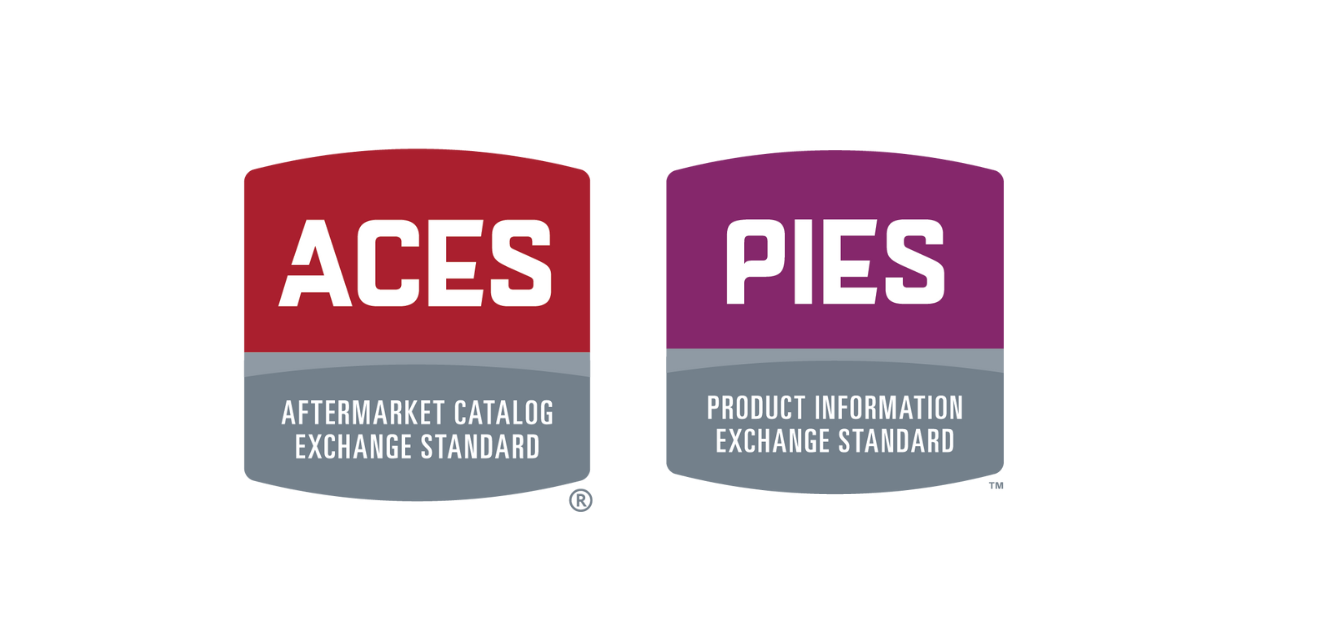Mastering ACES and PIES Data Standards
Automotive aftermarket manufacturers find themselves in an increasingly challenging position.
Manufacturers are incredible at making the products enthusiasts and mechanics love, but the need for accurate and efficient data management has become nearly as important as making quality products. To fully understand why data management is so crucial, look no further than the ACES (Aftermarket Catalog Enhanced Standard) and PIES (Product Information Exchange Standard) data standards. These established standards form the backbone of how information about a product is transferred from manufacturers to selling platforms like websites or eCommerce partners.
Issues with ACES or PIES data can lead to problems that directly affect your customers. From fitment problems to inaccurate product descriptions, common issues with ACES and PIES data management can significantly impact the customer experience.
This blog explains the intricacies of ACES and PIES to help you diagnose and troubleshoot common data accuracy issues. Learn how to stay updated with these standards and best practices for data management.
What is ACES and PIES?


ACES and PIES are standards used in the automotive aftermarket industry for managing and exchanging product data. Understanding these systems is key to efficient data management in the automotive aftermarket industry. They ensure compatibility and ease of product data exchange between manufacturers, distributors, retailers, and customers.
ACES is designed to enable the sharing of automotive catalog applications, allowing businesses to communicate complex fitment information accurately. PIES standardizes the way automotive product data, including prices, descriptions, images, and other crucial details, is conveyed. Each data set is vital for eCommerce companies to properly index products and provide fitment tools that consumers can use to find the right product.
These standards help provide a universal baseline for all aftermarket manufacturers to follow, allowing for easier collaboration between eCommerce partners and the manufacturers of quality products. Without standardization, it would be nearly impossible for manufacturers to ensure that eCommerce companies would properly index product data.
PIM (Product Information Management) systems help manufacturers maintain their ACES and PIES data effectively without having to rely on antiquated processes like spreadsheets, or even worse, paper copies. Not only do PIM systems help manage ACES and PIES data, but they also help transmit this data to eCommerce giants around the globe.
Troubleshooting Data Accuracy Issues


One of the biggest challenges in ACES and PIES data management is ensuring accuracy because of the vast catalogs with thousands of SKUs
Savvy manufacturers utilize PIM systems to manage their inventory effectively. Inaccurate data will lead to incorrect part fitments, returns, and ultimately, customer dissatisfaction that will lead to reduced sales and customer loyalty.
If you’re experiencing issues, it’s important to keep the following in mind to minimize potential data accuracy issues:
- Regularly audit your data and conduct periodic reviews to ensure accuracy and completeness across your product lines.
- Fix any fitment issues immediately in your PIM system.
- Implement validation tools that can validate your data against existing ACES and PIES standards and inform you of possible errors.
- Ensure those handling data are familiar with ACES and PIES specifications and understand system-wide impacts on poor data input.
- Utilize an effective PIM system that helps minimize user entry errors and provides transparency across your organization.
Staying Updated with ACES and PIES Standards
Even though ACES and PIES have been industry standards for many years, these requirements are not static; they evolve to meet changing industry needs. Staying current with updates is critical to ensure continued compliance with new requirements and other industry-specific changes.
Here are some best practice tips for staying updated on ACES and PIES standards:
- Subscribe to industry updates and join relevant forums or groups that provide regular updates on changes to standards.
- Subscribe to updates from the Auto Care Association, the creator of ACES and PIES.
- Attend workshops and training sessions that are invaluable for staying informed and understanding the practical application of updates.
- Implement a PIM system purpose-built for managing aftermarket data.
Best Practices for Data Management
Since the automotive aftermarket industry is constantly changing, it’s important to stay on top of best practices that lead to a more productive and accurate approach to data management.
Here are some of our helpful tips that you can utilize to manage ACES and PIES data effectively:
- Prioritize data quality and ensure that your data management processes emphasize accuracy and completeness.
- Utilize tools or systems that prioritize a centralized approach to data management, creating a single source of truth.
- Streamline data management processes by using tools and software designed to handle ACES and PIES data efficiently.
- Focus on interoperability and ensure your systems can interact seamlessly with other industry-standard systems, especially those used by eCommerce companies like Amazon or Walmart.
Effective ACES and PIES data management is crucial in the automotive aftermarket industry. By understanding these standards, regularly troubleshooting and updating data, and adhering to best data management practices, businesses can ensure efficiency, accuracy, and customer satisfaction.
For more information on managing your data the easy way, contact an expert at PDM Automotive today.




